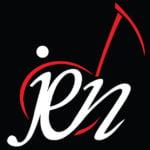How to Maximize the Jazz Festival Experience
Maximizing ensemble growth at a jazz festival involves so much more than just rehearsing music! This article is will help you create the best possible festival experience for you and your students.
MUSICAL PREPARATION
Showcase the Strengths of the Ensemble
A great director will be very sure of the particular strengths and weaknesses of the ensemble. If you are a big band director you might ask yourself questions like what is the range of your lead trumpet? Who are the soloists you would like to feature? Do you have a strong bass trombone? Directors of combos and vocal ensembles need to take stock in a similar manner. These questions and others need to be answered before the music selection process can begin.
Once you have the answers, make an outline of characteristics the music should have. Knowing that information will make your music selection process much easier and more effective.
You also should be aware of your ensemble’s weaknesses and work to avoid them. If, for example, you have an inexperienced bass player accompanying your vocal ensemble, a chart with an up-tempo double time section may not be a good choice.
Choose Music at the Right Level of Difficulty
Resist the urge to attend a new music reading session, hear some exciting, very challenging charts, and then try to push them on your ensemble without thought for their ability level. There is a real difference between challenging your ensemble with music that is a bit of a stretch and setting them up for failure with charts that are simply out of reach at their ability level.
Too many directors fall into the thinking that simply because a chart is difficult, it is automatically better than easier arrangements. This is certainly not the case! There is fantastic music available at every ability level. As a director, you need to make an investment of time to find the best fit for your students. Take time to study the many demo recordings that publishers release each year on CD and online. Also, utilize resources like online bulletin boards, social media and blogs to get recommendations from other directors, educators, and musicians.
Demonstrate a Wide Range of Styles
Most festivals allow time for 3 selections. With that in mind, the traditional formula for programming is as follows:
- A medium or up-tempo swing
- A ballad
- A rock, pop, or funk chart
You may also consider replacing the ballad with a slow swing chart similar to the style of Neal Hefti’s Li’l Darlin’ (as compared to a straight-eighth note feel). These are challenging for inexperienced musicians and provide a great vehicle for growth.
Another substitution worth considering is replacing the rock/funk chart with a Latin chart or other world music style (Celtic, Reggae, Calypso, etc). For vocal ensembles this may mean tackling a different language. This will this push the ensemble musically and provide opportunities to explore other cultures!
For Big Bands, One to a Part!
As educators, we are naturally inclined to allow as many students as possible to participate in ensembles. That means we often find ourselves with too many saxophones, trumpets, or maybe guitars.
It is important to remember that big band music is designed to have one player per part for proper balance. If you feel the need, let the players all be involved for home concerts. However, at festivals adjudicators expect to see no more than 20-25 musicians on stage. More importantly, without limiting the number of musicians your students are not getting the unique experience of playing in a big band.
Listen! Listen! Listen!
Finally, once you have selected your program its time to start listening to recordings of those charts (if available) and other great recordings in a similar style. Compile a list of these and distribute it to students early in the year. Design assignments that require focused listening. This is a fantastic opportunity to improve your festival set, expose the students to new artists, and grow their listening library.
This advice isn’t just for the students. Just as you expect your students to master intonation, dynamics, articulation, and style on their individual instrument, a director needs to be able to do the same at the ensemble level. This will only happen if you diligently listen to the music!
Looking for an enriching festival experience for your students? Sign up for our JENerations Jazz Festival, held each year concurrently with our annual conference. This non-competitive festival features a 30-minute performance and a 30-minute clinic by some of our world-class educators and performers. Groups are accepted first-come, first-served and all students receive admission to the JEN conference. Learn more at JazzEdNet.org/JENerationsJazzFestival.
